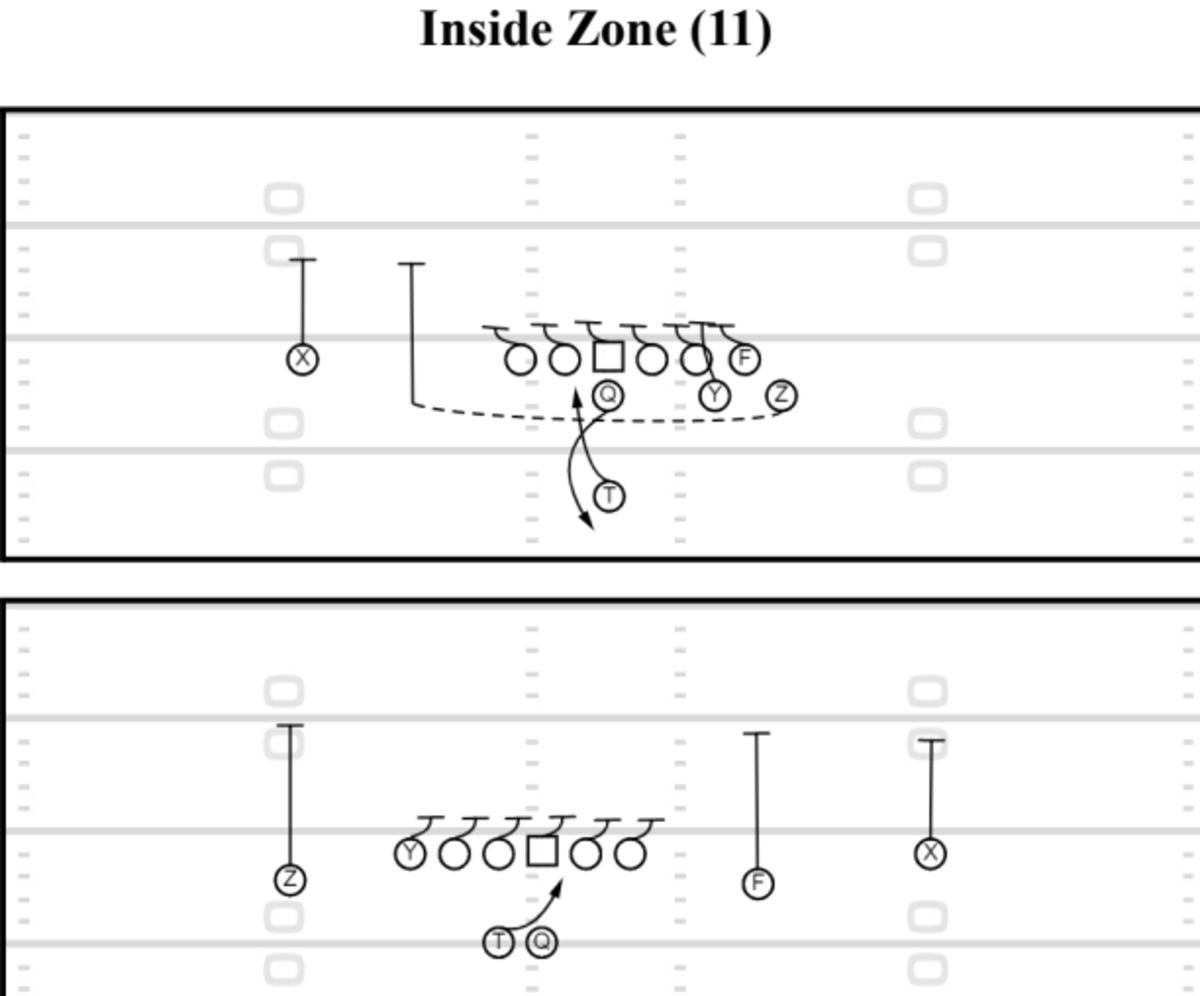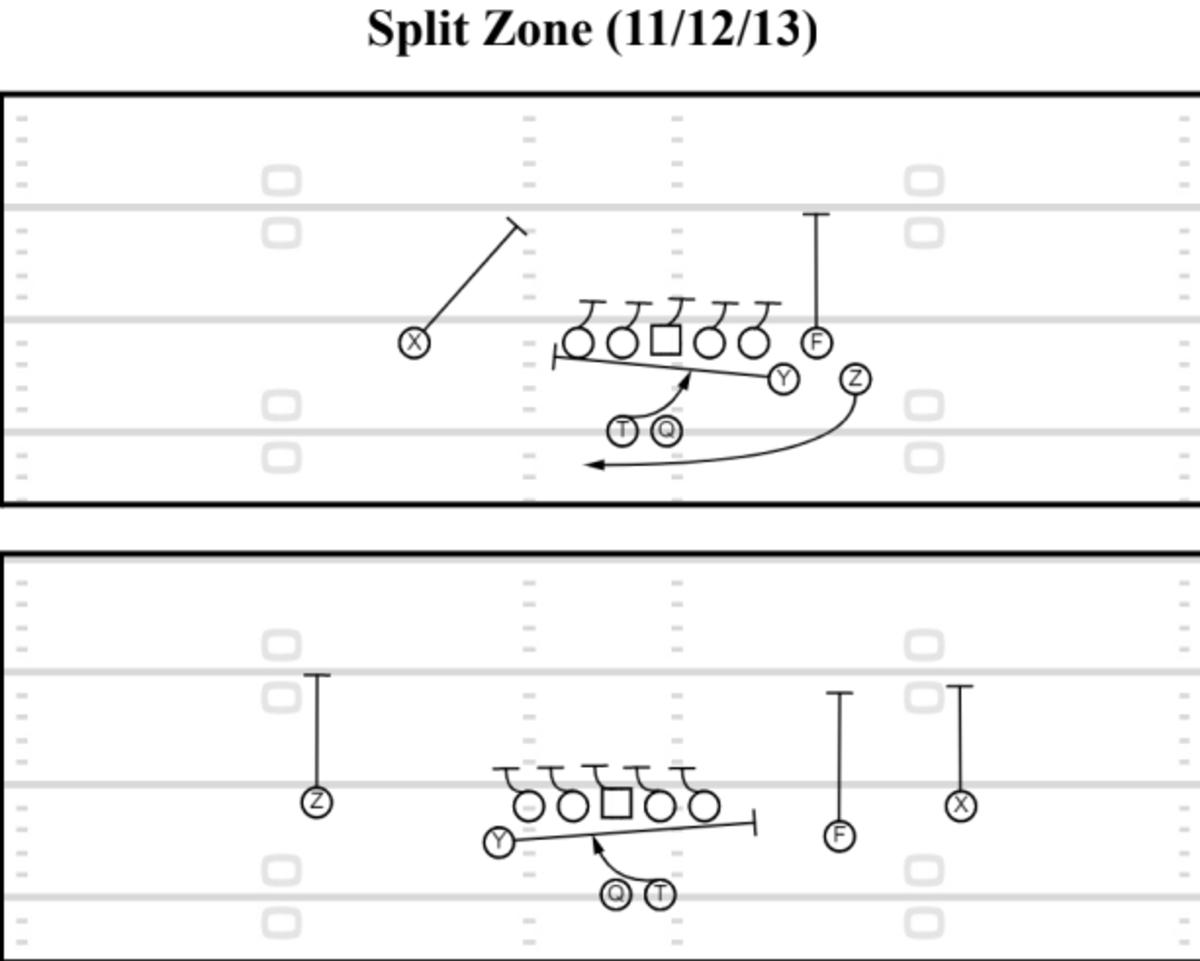Indianapolis Colts Run Game is Simple Yet Diverse
The Indianapolis Colts' rushing attack has been on a scorching pace in recent weeks. Since the return of Zack Moss back in week two, the team has amassed 622 yards rushing on 128 run attempts. That is an average of 155.5 yards per game and 4.8 yards per carry over that month long span.
There are a multitude of contributing factors that go into this resurgence of the Colts' run game. The Colts' offensive line, despite facing injuries, is playing at a near dominant level again and Zack Moss has been outstanding at creating yards. The most intriguing aspect of the entire formula is the scheme/design.
Personally, I don't exactly know who is most responsible for the Colts' run game design. Have RB Coach DeAndre Smith and OL Coach Tony Sporano Jr been leading that charge or is Offensive Coordinator Jim Bob Cooter focusing heavily on that phase of the offense? Regardless, I can say with great confidence that the Colts running game mirrors a lot of what worked with the Philadelphia Eagles last season.
So today, I'm going to dissect this Colts' rushing attack piece by piece to give you all a look into what the Colts look to accomplish on the ground.
The Staples of Inside Zone
The simplistic aspect of the Colts' rushing attack is how often this team leans on a few individual run designs. The Colts almost exclusively live in shotgun, so the core principle of the run game is the numbers advantage.
When an offense is aligned in the gun, it typically lessons the load in the box and creates optimal blocking advantages for lineman inside. Obviously this can have a negative effect when one blocker misses an assignment and there aren't enough extra bodies to clean up the mess, but the core philosophy is to clean out the wreckage inside by spreading a defense out.
With that, the Colts have two inside run staples that they lean into heavily to get the job done; inside zone and split zone. Starting off with inside zone, the run design is as basic as it gets. The running back takes an inside hand-off and presses gaps to create an opening behind the zone blocking offensive linemen.

Split zone is extremely similar to inside zone, except it utilizes a sniffer tight end to crack back across the formation on the backside defensive end. This type of run design is quite effective against teams that rely on that backside player to crash hard against zone runs to limit a running back's time to make a read.

These two run designs are simple, yet effective, ways to attack a defense. They may seem pretty cut and dry on the surface, but there is a lot of ways that Shane Steichen adds variations to keep a defense on their toes.
Steichen will attach RPO designs, read-option calls, play-action, and other options alongside inside zone/split zone to keep defenses honest. In total, I would wager that a good 70-80% of all Colts' rushing attempts come off of inside zone/split zone.
These two run designs are at the core of the Colts' offensive success and they have been mightily effective at getting the job done over the past month.
Mixing in Some Power
While the core of the Colts' offense is in inside zone running, the Colts will mix in some power runs when the time calls for it. Actually the best example of this came against the Los Angeles Rams back in week three. The Rams' run defense was shutting down the inside zone run game in the first half, limiting Zack Moss to just 10 yards on five carries.
Flash forward to the second half and the Colts began to lean more on the power run game. Moss was able to finally break through due to this adjustment, and finish half two with a very solid 13 rushes for 60 yards.
One of the team's best runs in that game came on this power rush to the right side. Quenton Nelson pulled around the outside and kicked out the playside defensive end, as Moss exploded up the middle for an impressive chunk gain:
The key to these power runs being so effective is just how similar they look to the inside zone runs. That is where the simple yet diverse philosophy comes into play with the Colts' rushing design. The Colts will pepper defenses with inside zone after inside zone and then mix in a power run from the exact same offensive look.
These power/gap runs have proven to be quite impactful for the Colts this season in limited uses. The Colts are a zone rushing team but that doesn't mean that they won't mix in some gap/power on occasion against certain defenses:
Mixing in Some Trap/Wham
While defenses are still reeling from the heavy inside zone team mixing in the occasion power play, the Colts will also throw in their fair share of trap runs. These calls are even more rare than power/gap, but they have been extremely explosive when called on the year.
On a typical run where a puller is involved, the pulling offensive lineman will kick out a playside defensive end or fill a gap to climb to the second level. Trap calls are different though, as the pulling lineman will be responsible for an unblocked interior defensive lineman (effectively trapping that defensive lineman after initial penetration).
These are excellent variations to add into a zone rushing attack to punish defensive lines for being aggressive. This first clip is a fairly typical trap variation where left tackle Blake Freeland pulls around to the middle to take out the unblocked 5-Tech on the inside:
The people's favorite variation to trap calls is what is called a wham block. Wham is the exact same thing as trap except the player pulling to the interior is the sniffer tight end. The sniffer is usually responsible to eliminating the nose tackle or 1-Tech on the play.
The Colts like to add a variation to wham that actually comes directly from Jeff Stoutland and the Philadelphia Eagles. Instead of just having the sniffer tight end moving against the flow of the play, the Colts also have the right guard kicking out the backside end to allow the right tackle to climb to the second level.
This subtle variation muddies the reads for both linebackers at the second level, leaving a massive hole inside.
Again, the beauty of this play is how similar it looks to other run designs. Just look at the play above again. Pre-snap it looks like the Colts are going to run split zone but it could literally be anything coming your way as a defense.
As a defensive tackle, you are firing off to disrupt the split zone, only to find out that the offense wanted that so they could wham you up the middle. The Colts' rushing attack is so simplistic in how it looks but so diverse in how it actually operates.
The Bottom Line
The Indianapolis Colts' designed run game is objectively a blast to study, and I didn't even mention the quarterback design run aspect of it. Shane Steichen has taken what he learned from the great Jeff Stoutland in Philadelphia and applied it to perfection with the Colts.
Zack Moss has been reaping the rewards of this diverse rushing attack over the past month, but imagine how effective Jonathan Taylor will look when he gets back to speed. The Colts may be able to approach 2021 levels of rushing dominance in the later half of the 2023 season.
Need your fill on daily Colts' content? Head over to the Locked On Colts' YouTube channel where Jake Arthur and I hit on all the major topics surrounding this team. Hit that subscribe button while you are there!
Follow Horseshoe Huddle on Twitter and Facebook.
Subscribe to Horseshoe Huddle on YouTube for daily Colts live-stream podcasts!
